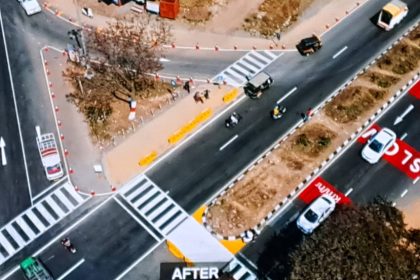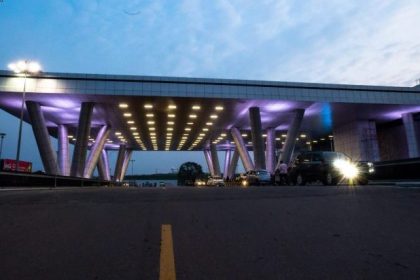NEWS ANALYSIS : Down but not out? Sudhir’s Stanbic stake keeps him a colossus of Uganda banking
KAMPALA OCTOBER 21 – The taking over of his bank by the central bank yesterday may have bruised his ego and taken executive power from him, but Ruparelia Group Chairman Sudhir Ruparelia, remains a formidable figure in Uganda’s financial industry.
While we are still trying to assess the likely impact of Crane Bank’s collapse on its subsidiary’s such as StanHope Finance and the Moneygram and Western Union franchises, 256BN has established some interesting facts about Sudhir.
For one, he remains the largest individual stockholder in Stanbic Bank Uganda holding shares worth Ushs 9.5 billion. That keeps him within the top 5 shareholders in Stanbic alongside institutional investors such as NSSF. As an institution, Crane Bank also holds Stanbic stock worth Ushs4 billion.
Property Market now on watch list
While he still owns a significant slice of Uganda’s banking sector through his Stanbic shareholding, analysts are now watching the likely fallout of Crane Bank’s collapse on Kampala’s property market. It is understood that unconventionally, Crane Bank was placing the collateral customers gave to secure their loans not with the bank but with Crane Management Services, the real estate subsidiary of the Ruparelia Group.
Whether this places them out of reach of the Bank of Uganda is one question but in case the reverse is true, analysts are predicting a possible slump in property values if the BoU puts them on the market. It could also mean an unwanted change in status for Sudhir, who at one time claimed to own 70 properties along Kampala’s main fare.
How the collapse unfolded
Insiders are partly blaming a change in government policy for taking the wind out of Crane Banks’s sails. As part of efforts to reduce loss of government money, the Ministry of Finance, a while ago introduced a single treasury account. This meant that districts were now drawing their money directly from the BoU negating the need for operating multiple bank accounts by government entities in commercial banks.
Crane’s rapid branch expansion to 45 outlets was premised on banking for the government in these locations. While other lenders such as Stanbic were equally hit by the change in policy, they had more room for manouvre. They had more mature operations and where business was no, longer viable, it was easy to close branches because Stanbic was a tenant. On the other hand, Crane Bank was a landlord through its Crane Management Services.
To mitigate, Crane for about 3 years carried forward losses from these operations. That could not hold for long without a positive turn in the business and the bank was forced to declare an Ushs 3 billion loss for 2015.
That is when problems started. The bigger customers began adjusting their positions denying the bank sufficient cash-flow. Borrowers who were lend money at reckless interest rates as high as 32percent started defaulting. Crane Management Services which had been gobbling up the collateral, mainly undeveloped plots of land in the CBD and building had been on a spree erecting multi-stories structures. When the Bank of Uganda called for new capital to fill the hole left by defaulters, Crane Bank’s shareholders did not have resources to call new capital. Yet the buildings could not be converted into cash without incurring a huge penalty on capital.
The sale that never was
Sudhir was trapped but he waited too long and now his fate is up to the whims of the markets. As the crisis at Crane Bank deepened, hope emerged when Bob Diamond’s Atlas Mara expressed interest in buying into the bank. Due diligence commenced but the talks collapsed over disagreements over the value of the bank. Sudhir wanted some Ushs60bn in non-performing loans classified as an asset. Bob Diamond thought it was too toxic to stomach. The talks collapsed and the Bank of Uganda could not stay out any longer without risking its own credibility.
For Mbabazi poetic justice?
256BN was not privileged to see former premier John Patrick Amama Mbabazi’s facial expression on receiving the news of Crane Bank’s closure but it may be safe to assume that even if he maintained his characteristic inscrutable demeanor, deep inside, he must be feeling a sense of poetic justice. Four years ago, Crane Bank swallowed NBC where Mbabazi was a shareholder. Now, it appears the ‘python’ is set to be swallowed by another python.

 Uganda’s Aviation Infrastructure: Time for ambitious upgrades and structural reform
Uganda’s Aviation Infrastructure: Time for ambitious upgrades and structural reform
 SaveLIFE Foundation plans to extend India’s safe roads model to Kenya, Zimbabwe
SaveLIFE Foundation plans to extend India’s safe roads model to Kenya, Zimbabwe
 Entebbe in race against time as passenger traffic overruns capacity
Entebbe in race against time as passenger traffic overruns capacity
 Commuter bus operator Tondeka Metro loses city commuter business in web of intrigue
Commuter bus operator Tondeka Metro loses city commuter business in web of intrigue
 100+ Accelerator selects Ugandan startup Yo-Waste to pilot glass recycling at Nile Breweries
100+ Accelerator selects Ugandan startup Yo-Waste to pilot glass recycling at Nile Breweries
 Boeing’s record SAF purchase supports airlines decarbonisation efforts
Boeing’s record SAF purchase supports airlines decarbonisation efforts
